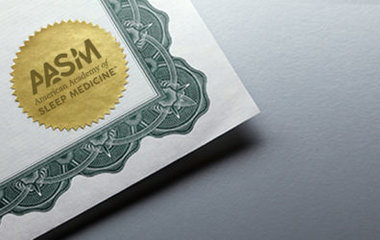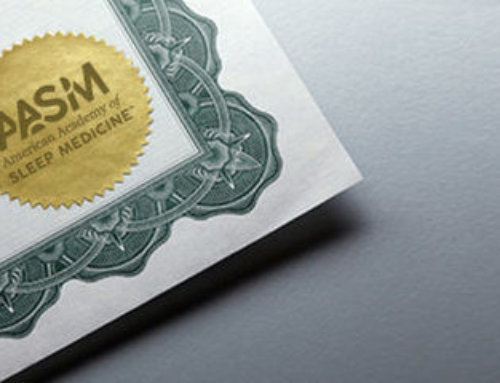Now available on the AASM website are updated Standards for Accreditation of sleep facilities and Independent Sleep Practice Standards for Accreditation. The AASM revised two standards for sleep facilities, H-3: Database/Storage and K-7: Safety Risks Unique to in-center Sleep Testing, to improve clarity and facilitate implementation. The revised standards are detailed below:
Standard H-3 Database/Storage
After reviewing the standard, the AASM removed the requirement to maintain a cumulative database or spreadsheet of all patients’ diagnoses. The AASM determined that this is neither necessary nor functional for today’s sleep programs. Sleep facilities, including those in which the sleep lab and associated clinic are separate, are still required to maintain and access patient medical records; however, the use of a cumulative database is no longer required. This change is applicable to both sleep facility and independent sleep practice accreditation.
Previous Standard H-3 Database/Storage:
The facility maintains a cumulative database or spreadsheet of all patients’ sleep diagnoses, using current code numbers from the current edition of the International Classification of Sleep Disorders. The facility must store the raw data (excluding video) from all sleep tests (including but not limited to PSG, MSLT, and HSAT) for a minimum of five years or as required by law if longer. Electronic copies may be provided to other treating sleep physicians who are not affiliated with the facility in accordance with patients’ request for release of medical information.
Revised Standard H-3 Storage:
The facility must store the raw data (excluding video) from all sleep tests (including but not limited to PSG, MSLT, and HSAT) for a minimum of five years or as required by law if longer. Electronic copies may be provided to other treating physicians who are not affiliated with the facility in accordance with patients’ request for release of medical information.”
Standard K-7 Safety Risks Unique to In-center Sleep Testing
In an effort to provide clarity and promote consistency in language, the AASM updated Standard K-7 to clarify the timeframe for use of a chaperone or continuous video monitoring by sleep facilities “during the attended sleep testing encounter.” The AASM also clarified the sleep facility’s need to minimize the risk for assault or allegations of inappropriate behavior in high-risk areas (patient bedrooms and hookup areas) that may require the use of a chaperone or continuous video monitoring. The additions to the Standards are underlined below.
Revised Standard K-7 Safety Risks Unique to In-center Sleep Testing:
Recognizing the unique vulnerability of patients and staff in a sleep testing environment, facilities must have explicit policies and procedures to minimize the risk for assault or allegations of inappropriate behavior during the attended sleep testing encounter. This may include the use of continuous video monitoring in high risk areas during the attended sleep testing encounter (patient bedrooms, hookup areas) and/or specific training for the use of chaperone during interactions between patients and staff.”
These standard revisions are in effect May 1, 2018, at which time all currently accredited facilities will fall under the revised standards, and all applications for accreditation will be reviewed according to these revised standards.
Find more resources on the Accreditation Resource page on the AASM website. If you have questions about AASM accreditation, please contact the Accreditation Department at accreditation@aasm.org.





